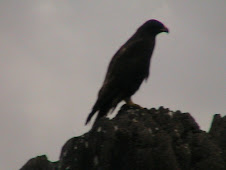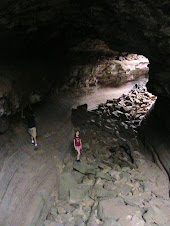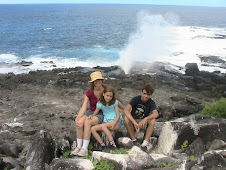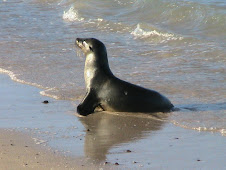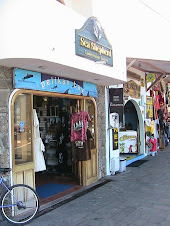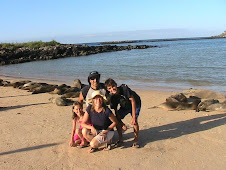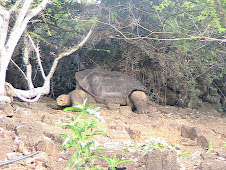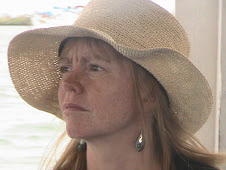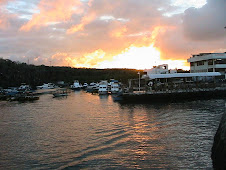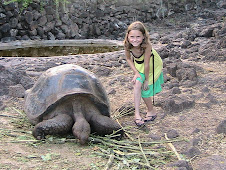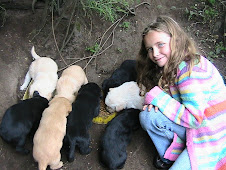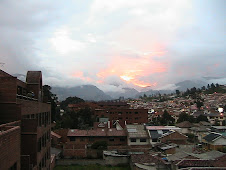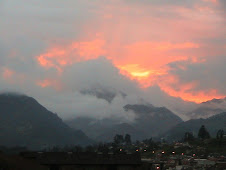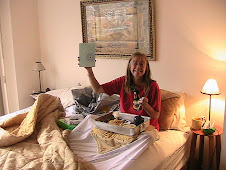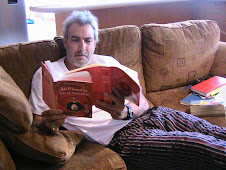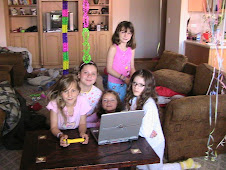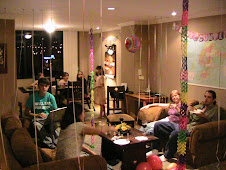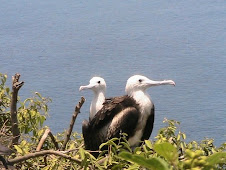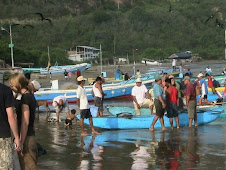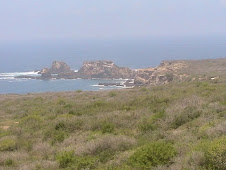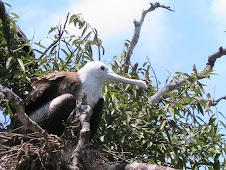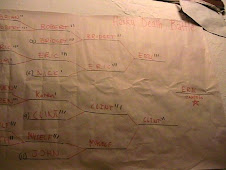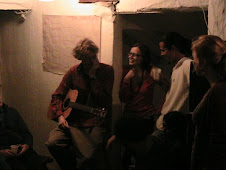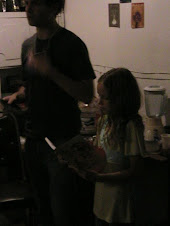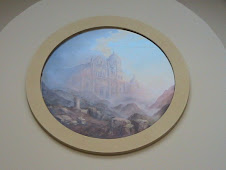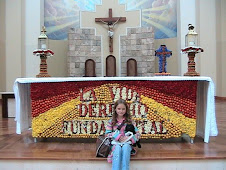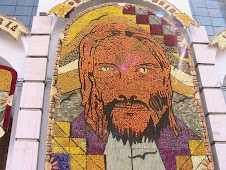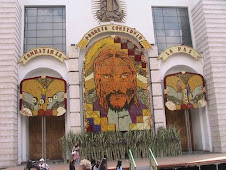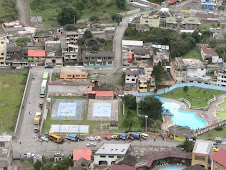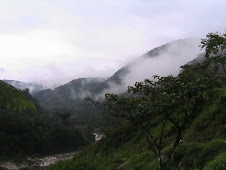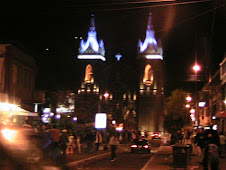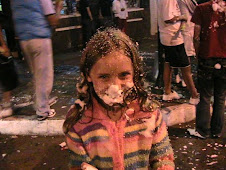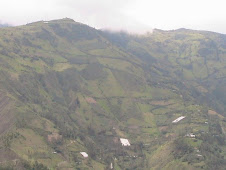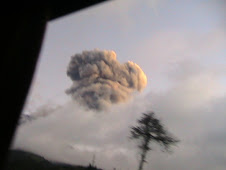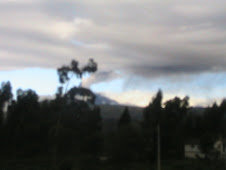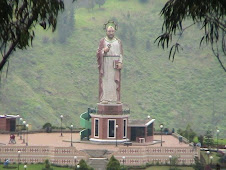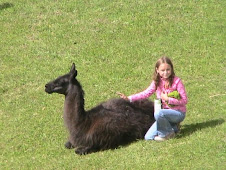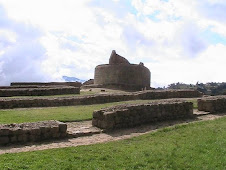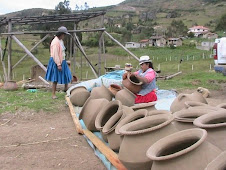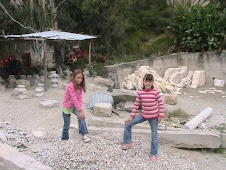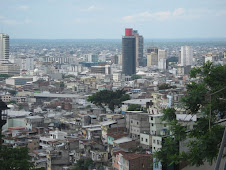
WE wrapped up school and work in Cuenca on December 17 2008 and were on the morning bus to Vilcabamba the next day to start our holidays. Vilcabamba means “sacred valley” in the indigenous Quichua language, and is in the southern part of the country, about 6 hours from Cuenca by bus, and about 100 miles or so from the Peruvian border. If you are checking on the map, Vilcabamba is about 1 hour from the closest major city, Loja. Just a note, Ecuador’s Vilcabamba is not to be confused with the famous and last Incan city of the same name in Peru. For more on this topic consult
I meant to check out the connection but “forgot” to do so while in Vilcabamba. And anyway, Vilcabamba advertises itself as place where one forgets time, history, and all that other burdensome stuff. Supposedly, people live longer there because of the better air and perhaps the hallucinogenic cactus juice. It proved to be quite the relaxing place, even though the trip started off a bit on the downside as Bridget had her purse stolen, and since the camera was in the purse, there is not a photographic record of our visit. Again, seems to keeping in line with the town’s motto.
In Vilcabamba we stayed at a lodge, Izcayluma, nestled in one of the mountains surrounding the town, which provided some wonderful vistas. Run by a pair of German brothers, the lodge offered some good cuisine and a variety of hikes, horseback rides, and massage appointments.
We did a bit of hiking, with Jules and Norm able to do the Mandango Trail – a four-hour jaunt that allows one to walk on top of the ridgeline over a number of peaks. On the ridgeline, one could get a 360° view of the Andean Mountains leading from Ecuador into Peru. Quite impressive, and probably one of the top hiking moments one can experience. No personal photos, but here is a link with some images:
 After our stay in Vilcabamba, we bussed back to Cuenca for Christmas. It was a quiet affair with only a small tree and our new Iguana model (Iggy) to keep us company. Just the right tonic from the normal Xmas pressure found in the U.S.
After our stay in Vilcabamba, we bussed back to Cuenca for Christmas. It was a quiet affair with only a small tree and our new Iguana model (Iggy) to keep us company. Just the right tonic from the normal Xmas pressure found in the U.S.  On Christmas Eve we watched, El Pase del Niño, a long procession of cars, people in costume, and of course, lots of kids, pass through the town.
On Christmas Eve we watched, El Pase del Niño, a long procession of cars, people in costume, and of course, lots of kids, pass through the town.  An old tradition, which seems to be particularly big in Cuenca. As the pictures show, lots of religion mixed with food (pig, guinea pig, and chicken), along with pop culture. Sort of like seeing Jesus at the Mummer’s Parade eating a Philly Cheese Steak.
An old tradition, which seems to be particularly big in Cuenca. As the pictures show, lots of religion mixed with food (pig, guinea pig, and chicken), along with pop culture. Sort of like seeing Jesus at the Mummer’s Parade eating a Philly Cheese Steak.  On Christmas Day, we spent time relaxing with friends, playing Scrabble in Spanish, and watching the movie Tropic Thunder (“I don’t read the script, the script reads me.”)
On Christmas Day, we spent time relaxing with friends, playing Scrabble in Spanish, and watching the movie Tropic Thunder (“I don’t read the script, the script reads me.”)We planned on spending a few more days in Cuenca, but our trip to the Amazon, forced us to catch a flight on December 27 to Quito.  This turned out to be fortuitous because we had yet to spend time in Quito, and our short stay (1.5 days) proved to be quite interesting. Quito, like Cuenca, is nestled in the mountains, and has pretty much the same climate. The old city was quite nice with narrow streets, excellent architecture, and a great deal of cathedrals. Definitely need to spend a bit more time in Quito in the future!
This turned out to be fortuitous because we had yet to spend time in Quito, and our short stay (1.5 days) proved to be quite interesting. Quito, like Cuenca, is nestled in the mountains, and has pretty much the same climate. The old city was quite nice with narrow streets, excellent architecture, and a great deal of cathedrals. Definitely need to spend a bit more time in Quito in the future!
 This turned out to be fortuitous because we had yet to spend time in Quito, and our short stay (1.5 days) proved to be quite interesting. Quito, like Cuenca, is nestled in the mountains, and has pretty much the same climate. The old city was quite nice with narrow streets, excellent architecture, and a great deal of cathedrals. Definitely need to spend a bit more time in Quito in the future!
This turned out to be fortuitous because we had yet to spend time in Quito, and our short stay (1.5 days) proved to be quite interesting. Quito, like Cuenca, is nestled in the mountains, and has pretty much the same climate. The old city was quite nice with narrow streets, excellent architecture, and a great deal of cathedrals. Definitely need to spend a bit more time in Quito in the future!Next, it was onto the Amazon. Unable to catch a flight from Quito to Lago Agria (the launching point for trips to the northern Amazon basin, or “Oriente”) we were compelled to take a bus. Seeing as it was only about 150 miles, we figured we could handle the 6-7 hour bus ride. 9 hours later with a bag of vomit to show for our exertions we found ourselves in Lago Agria. It definitely lived up to its reputation of being a “rough frontier town.” The “Oriente” up until the late 1960s was a very underpopulated and isolated place. But they struck oil in them there jungles ca. 1968 and so a number of oil towns sprang up, Lago Agria being one of them. For some reason, the financial windfall of the oil industry has not trickled down too much to the town. Certainly, it has provided many people with a livelihood – through the oil industry or the tourism industry – but the town itself is a pretty dismal affair. Literally, it has the feel of a town from the Wild West. So, maybe something interesting to find there, if one wants the frontier experience, but we spent only a night there and then traveled to our camp in the jungle.

 Add 5 hours (another bus ride and then a canoe trip) to the initial bus ride, and you finally see us in our camp in the Cuyabeno Reserve.
Add 5 hours (another bus ride and then a canoe trip) to the initial bus ride, and you finally see us in our camp in the Cuyabeno Reserve.  The lodge itself was nice and had a bit of a Gilligan’s Island feel to it with the thatched rooves and hammocks. We came at the end of the dry season, so the river level was down and it did not rain until our last few days in the jungle. Supposedly this made for a bit better viewing of wildlife.
The lodge itself was nice and had a bit of a Gilligan’s Island feel to it with the thatched rooves and hammocks. We came at the end of the dry season, so the river level was down and it did not rain until our last few days in the jungle. Supposedly this made for a bit better viewing of wildlife.
We took our first hike an hour or two after arrival. It was a night hike through the jungle and allowed us to see a number of spiders and frogs along with a stray scorpion.
 In the following days we got down to business and took numerous canoe trips and hikes in the reserve.
In the following days we got down to business and took numerous canoe trips and hikes in the reserve. 
 We fished for piranha, searched for caiman at night, visited a shaman, and went hunting for anaconda. The anaconda hunt was fascinating. We had to walk through the dry riverbed, navigating deep mud, until we finally found the anaconda track and its lair underneath a tree trunk. We got a few peaks of the monster, but ultimately could not get it to come out, despite the guides repeatedly sticking the ground with various objects (I know it sounds like a Fox Video Special, “When Animals Attack,” but it didn’t seem that stupid at the time).
We fished for piranha, searched for caiman at night, visited a shaman, and went hunting for anaconda. The anaconda hunt was fascinating. We had to walk through the dry riverbed, navigating deep mud, until we finally found the anaconda track and its lair underneath a tree trunk. We got a few peaks of the monster, but ultimately could not get it to come out, despite the guides repeatedly sticking the ground with various objects (I know it sounds like a Fox Video Special, “When Animals Attack,” but it didn’t seem that stupid at the time).  Despite not seeing the beast, I will always remember the ground moving as it eluded the prodding of the guide’s sticks.
Despite not seeing the beast, I will always remember the ground moving as it eluded the prodding of the guide’s sticks.A last note on our Amazon trip – we celebrated New Year’s in the jungle. Again, nice to get a different version of the celebration. We sat around a bonfire drinking beer and cuba libres and danced to reggaeton. Lizzie and Julian even got out on the dance floor, with Julian continuing his "tween" Bildungsroman, and actually asking a local girl to dance. As the clock struck midnight, two life-sized puppets (actually effigies of the owners of the camp) were tossed on the bonfire, and people started leaping over the fire. No photos of this event, but we did shoot some video and a later blog we’ll hopefully be posted with video segments.
So, now we are back to Cuenca and our daily routines again: the kids are back at school, and the parents are working at the language institute. Tough times seem to be hitting the language institute – a dearth of students. No extra money coming from all the Ecuadorians who work abroad seems to have made English a luxury and not a necessity. Go figure.
But life goes on. We note that, as of the writing of this blog, the Eagles have advanced to the playoffs and even won a game. Of course, this is more evidence that our going abroad has led to Philadelphia sports success. We like Malaysia, so why don’t you all start sending money to keep us abroad and insure that Philadelphia continues its new winning tradition in sports.
If you don’t choose to support this effort, then we will just have to come home and introduce the new adjectival WMD “unitedstatesian” into the American vocabulary. Of course, I assume that most Americans will embrace this linguistic “great awakening” like they embraced the last 29 years of the most recent “great awakening.” Just think, no more “Uh-mer-i-kan” as in, “I’m an Uh-mer-i-kan,” but rather, “I’m an Unitedstatesian.”












